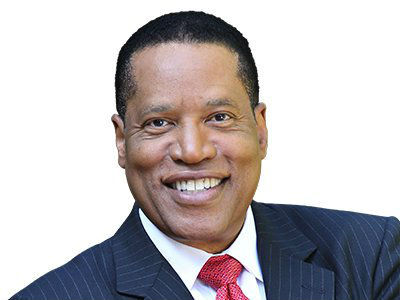How to navigate the mental toll of being a sports parent
Lifestyle

Audio By Carbonatix
10:30 AM on Tuesday, October 21
By Kim Sheffield-Chang for Blueprint, Stacker
How to navigate the mental toll of being a sports parent
What was once a neighborhood pastime has evolved into a full-time job. And for many parents, the packed schedules, high expectations, and financial burden of youth sports are taking a toll.
In the past decade, youth sports have evolved from local rec leagues into a multi-billion-dollar industry. More than 27 million U.S. children now play organized sports, and families are spending an average of $1,000 per child, per season, according to Business Insider. And that adds up: a New York Life Insurance survey found that most families spend closer to $3,000 annually, often across multiple sports, and dedicate up to 15 hours per week to practices, games, and travel. The result? Exhaustion. Financial strain. And a quiet, collective burnout that’s rarely talked about. Vivian Chung Easton, a mental health clinician at Blueprint, a therapist-enablement technology platform, shares insights into the burden of youth sports and how sports families can find balance.
The Real Cost: Time, Money, and Burnout
Parents aren’t just expected to be spectators: in reality, they’re coaches, chauffeurs, fundraisers, nutritionists, and emotional anchors. Just over 61% volunteer in some capacity, according to the Youth Sports Benchmark Report (YSBR), which adds another 4.2 hours a week in unpaid labor.
This invisible labor and commitment add up. The price isn’t only financial; it’s psychological. Constant hustle feeds chronic stress and leaves little time for genuine rest across the whole family.
The Hidden Pressure: When Fun Turns Into Burnout
Ideally, sports are supposed to teach teamwork, resilience, and joy. But for many families, fun fades fast under the weight of expectation. 80% of youth athletes report high levels of pressure from coaches (Gitnux data). What’s more, nearly 70% of youth athletes experience burnout at some point, with half considering quitting and over 60% feeling physically exhausted.
Of course, this pressure doesn’t come from malice — it comes from a place of love and wanting children to succeed. But the high expectations and critical feedback that comes with any competitive sport are strongly correlated with youth anxiety, lower confidence, and emotional exhaustion (AAP Publications).
What’s lost in all this striving is the simple joy that drew families to sports in the first place. The friendships. The movement. The life lessons that don’t hinge on medals.
Family Well-Being: What Everyone Sacrifices
The youth sports economy is now estimated at a staggering $30–40 billion annually (Project Play). Travel has become the single biggest expense — averaging $260 per child per sport — surpassing even equipment and camps.
And families are feeling the strain. Nearly 60% report financial stress, with 11% considering debt to cover costs (CNBC). Those numbers translate to missed family vacations, skipped social events, and fast-food dinners between practices. The average “sports family” eats out 2.5 times per week, contributing to poorer nutrition (YSBR).
This external pressure means that families are making sacrifices that shape their whole dynamic: Dinners are replaced by car snacks. Weekends vanish into travel tournaments. Parents lose connection with one another.
But what if being a good sports parent also means protecting your family’s mental health?
Resetting the Sidelines: Simple Shifts for Less Stress
Parents can’t control the culture of youth sports, but they can control how they engage with it. Supporting your child’s love of play shouldn’t mean erasing your own needs or well-being. Here’s how to start recalibrating:
1. Calendar check. At the start of each month or when you get the season’s schedule, audit your calendar. When possible, plan ahead for and designate “no-sports weekends,” wherein your schedule is open. Those open weekends shouldn’t just be an unfilled time slot, their openness is the point: use that time intentionally to rest, reconnect, and recharge.
2. Quality over quantity. Encourage your child to rest between seasons. Celebrate effort, teamwork, and joy — not just wins or stats. Replace “Did you score?” with “Did you have fun?” or “What were some highlights between you and your teammates?”
3. Rotate leadership. Trade weekend sports commitments with another parent or grandparent: everything from rides, snacks, and volunteering. Alternating leadership can also free up a bit more time and focus to ensure that any sports siblings know that they are valued too, even in the midst of a busy season. It’s good for everyone when support and perspective are shared.
4. Involve your athlete in the conversation. Ask your child what parts of their sport they like most, and have that conversation often. Their answers might surprise you, and can change over time, but it’s important for them to articulate what really matters to them. This might take some direction on your part, but be sure to leave space in the conversation for them to talk. Try to avoid asking leading questions like “Soccer is so much fun, right?” and instead let them tell you about what’s enjoyable or fun for them. Their answers can help you prioritize what’s actually worth your family’s time and money.
5. Budget honestly. Create a clear family sports budget. Use secondhand gear, volunteer for fee reductions, and skip elite extras that don’t add joy.
6. Protect unstructured time. Kids need unscheduled, screen-free downtime as much as they need drills. So do parents. Board games, movie nights, or long walks count as team bonding, too.
When families reclaim their schedules and values, sports can return to what they were meant to be: a place for connection, confidence, and health.
A Healthier Game for Everyone
Youth sports at their best teach something simple but profound: teamwork is about more than winning. The same is true for families. Being a “team” doesn’t mean overextending to the point of collapse. It means supporting one another’s well-being.
There’s no medal for most miles driven or most weekends sacrificed. The victory is quieter: a family that laughs together on the drive home, that eats dinner around a table instead of a car dashboard, that remembers play is supposed to feel like joy.
Because when the sidelines get stressful, it’s not just about pulling back: it’s about stepping forward differently. Not as coaches or investors, but as parents who can model what balance, rest, and happiness actually look like.
This story was produced by Blueprint and reviewed and distributed by Stacker.

























